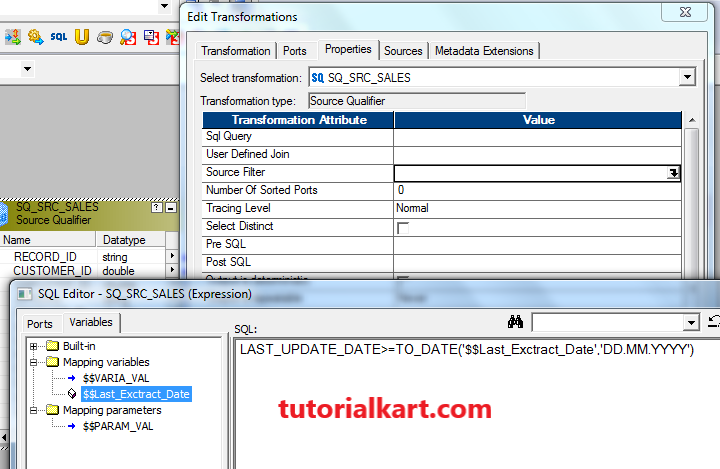The incremental extraction in Informatica gives you only latest changes from db table not all the rows from the table. This incremental extraction can be achieved by using mapping parameters or variables. Generally each of your OLTP table will have two common columns. One is Creation date column which tells you that when each row has been inserted first time into the table. And second column is Last Update Date which tells you when the inserted row was modified last time.
Example :- When a customer first time has entry into Customer OLTP table on 01/23/2019, it will have creation date and last update date will be same as 01/23/2019.
| Customer_ID | Name | Creation_Date | Last_Updated_Date |
| C1 | Bell | 01/23/2019 | 01/23/2019 |
Now if the same customer information changed on 01/30/2019 in the same OLTP table, the creation date will always be same as 01/23/2019 but last update date will change as when customer recently changed information in the OLTP table as 01/30/2019.
| Customer_ID | Name | Creation_Date | Last_Updated_Date |
| C1 | Bell | 01/23/2019 | 01/30/2019 |
How to implement this incremental extraction in Informatica?
This can be achieved with mapping parameters or variables. Create a mapping parameters or variables inside a mapping and assign a date value that when you run data from OLTP to OLAP last time in the parameter file.
Now at your Source Qualifier properties level use filter condition as below.

For example use our same m_Passthrough_Sales mapping as shown in diagram and create session and workflow then execute and see.
How to test Incremental load?
Here we need to test two main cases.
- Right data is picking up with incremental query. i.e variable dates.
- Count is same or not.
Note:- Whenever we are applying incremental logic on any source date column, we should first check that that column has any nulls or not. This is very important
